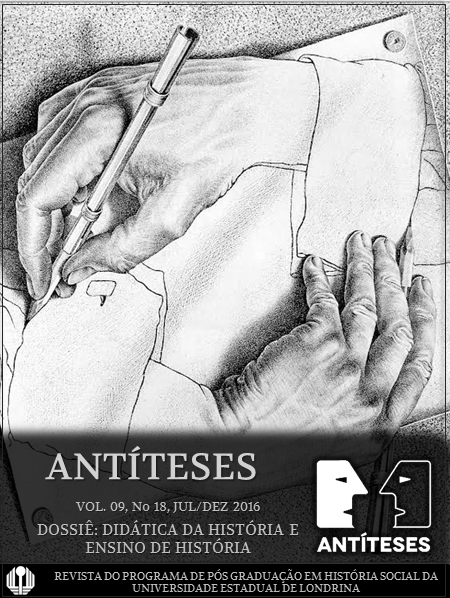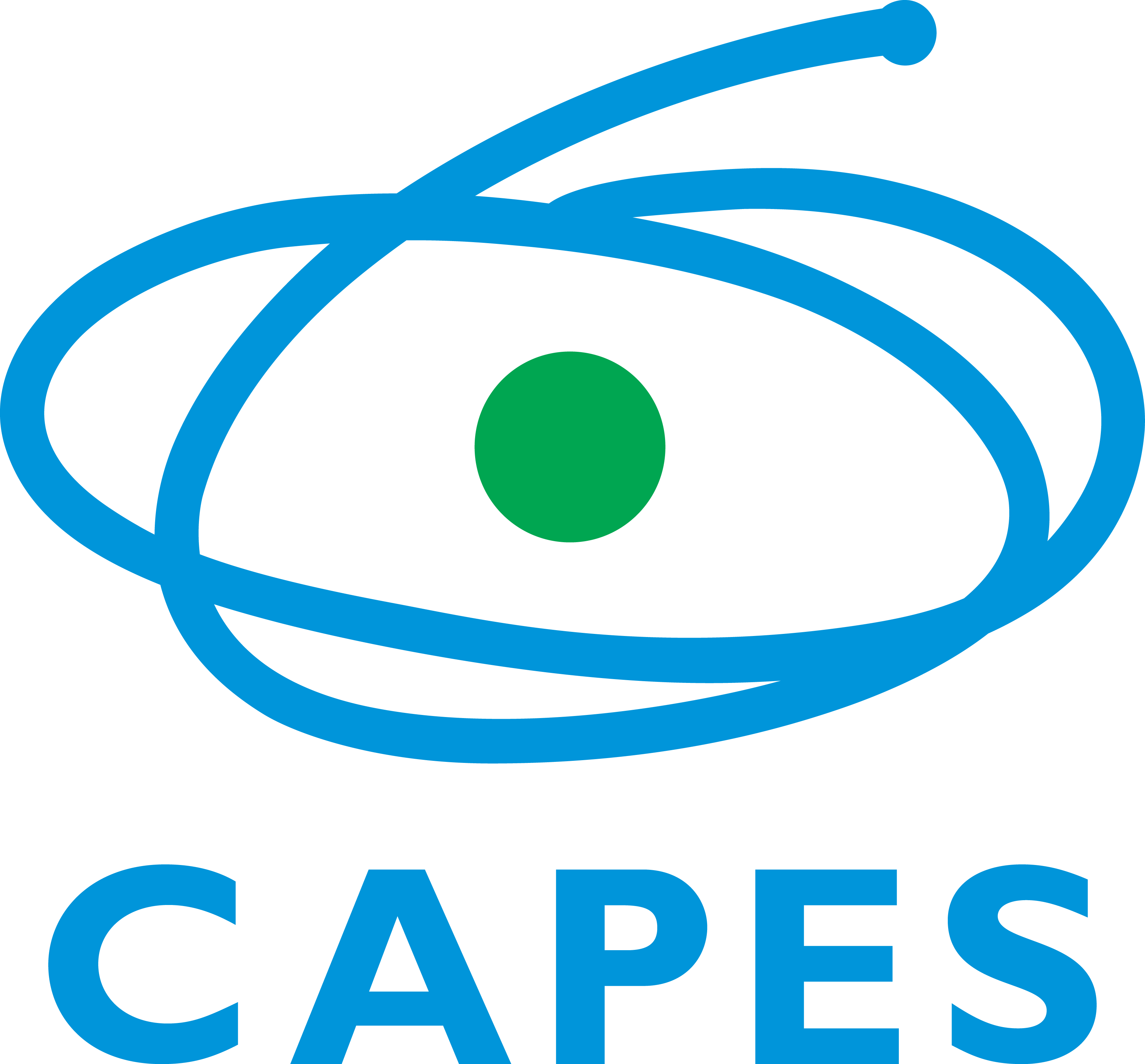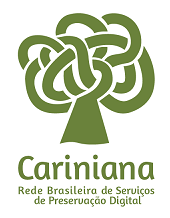Research about social, curricular and geographical transversality of a teaching and learning history model based on ojbects as primary sources and classroom museums
DOI:
https://doi.org/10.5433/1984-3356.2016v9n18p87Keywords:
History education, Model, Teaching through objects, Classroom museum, transversalityAbstract
The article's starting point is the problem of perception and understanding of history -which is essential to create a critical citizenship- by future citizens (primary school students) as well as future educators (teachers training university students). The article proposes two models of teaching and learning history and its development in two case studies adapted to different ages and geographical contexts (case 1: teachers training degree students of a Spanish university and case 2: Portuguese primary education pupils). Results of the development of the teaching and learning model in both contexts are presented at the same time that the social, curricular and geographical transversality of the model proposed is exposed.Downloads
Download data is not yet available.
References
AGUIAR, Liliana. Ver, tocar e sentir a Maia: um projeto de Mediação Patrimonial no Museu de História e Etnologia da Terra da Maia. 2015. Dissertação (Mestrado em Museologia) -Faculdade de Letras da Universidade do Porto, Porto, 2015.
EGEA, Alejandro; ARIAS, Laura. La arqueología llega a las aulas. Objetos y otras fuentes primarias para la enseñanza de la historia. In: SOLÉ, Glória (ORg.). Educação Patrimonial: contributos para a construção de uma consciência histórica. Braga: Centro de Investigação em Educação (CIEd), 2015. p. 151-169.
BARNSDALE-PADDOK, Linda; HARNETT, Penelope. Promoting play in the classroom; children as curators in a classroom museum. Primary History, London, v. 30, p. 19-21, 2002.
BONASTRA, Quim; JOVÉ, Glòria; LLONCH, Nayra. (Inter)(Trans)disciplinariedad em formación de maestros. Aula de Innovación Educativa, Barcelona, v. 239, p. 16-22, 2015.
CAINELLI, Marlene. Educação Histórica: perspectivas de aprendizagem da história no ensino fundamental. Educar em revista, Curitiba, n. esp., p. 57-72, 2006.
COOPER, Hilary. History in the Early Years: Teaching and Learning in the first three Years of School. London: Routledge, 1995.
COOPER, Hilary. The Teaching of History in Primary Schools- Implementation the Revised National Curriculum. 3. ed. London: David Fulton, 2005.
CORBIN, Juliet; STRAUSS, Anselm. Basics of qualitative research. Techniques and procedures for Developing Grounded Theory. Thousand Oaks, CA: Sage, 2008.
DURBIN, Gail; MORRIS, Susan; WILKINSON, Sue. A Teacher's Guide to Learning from Objects. London: English Heritage, 1996.
FERNANDES, Carmen. A explicação histórica com base nos artefactos: um estudo com alunos do 3º ciclo do ensino básico. 2009. Dissertação (Mestrado em Educação) - Universidade do Minho, 2009.
HARNETT, Penelope. Shared Heritages? Investigating Ways of life in the Past to promote European Consciousness with Children in Primary schools. In ROSS, Alistair (Ed.) Citizenship Education: Europe and the World. London: CiCe, 2006, pp.169-174.
HAWKES, Angela. Objects or Pictures in the Infant Classroom? Teaching History, v. 85, p. 30-35, 1996.
HISTORICAL ASSOCIATION'S OCCASIONAL PAPER. School Museums and Primary History. London, 1994.
HOODLESS, Pat. Time and Timelines in the Primary School. London: Historical Association, 1996.
JOVÉ, Glòria. Viatges escolars a través del temps a partir d'un quadern de rotació del mestre Pau Farrús. Mascançà. Revista d'estudis del Pla d'Urgell, anuari, v. 6, p. 45-60, 2015.
KERRIGAN, Sonia. Creating a community school museum: theory into practice. Internacional Journal of Historical Learning, Teaching and Research, New York, v. 2, n. 1, p. 1-7, 2001.
LLONCH, Nayra. El método por descubrimiento en la enseñanza de ciencias sociales: ejemplificación y análisis. In: ÁVILA, R. M.; RIVER, P.; DOMÍNGUEZ, P. (Ed.). Metodología de investigación en Didáctica de las Ciencias Sociales. Zaragoza: Institución Fernando el Católico, 2010. p. 597-606.
LLONCH, Nayra; MARTÍN, Carolina. Los códigos QR y su potencial como herramientas de educación patrimonial interdisciplinar en las aulas. In: GUZMÁN, María (Ed.). Patrimonio y educación. una propuesta integradora. Granada: Universidad de Granada, Junta de Andalucía, 2016. p. 167-177.
MARGERY, Enrique. Complejidad, transdisciplinariedad y competencias. Cinco viñetas pedagógicas. Costa Rica: Uruk Editores, 2010.
MCGUIRE, Margit. Storypath Foundations: An Innovative Approach to Teaching Social Studies. Chicago, IL: Everyday Learning Corporation, 1997.
NICOLESCU, Basarab. La transdisciplinariedad Manifiesto. México: Multidiversidad Mundo Real Edgar Morín, 2009.
NULTY, Patricia. Talking about artefacts at Key Stage 1. In: HOODLESS, Pat (Ed.). History and English in Primary School: Exploting the Links, London: Routledge, 1998. p. 20-34.
PINTO, Maria Helena. Educação histórica e patrimonial: conceções de alunos e professores sobre o passado em espaços do presente. 2011. Tese (Doutorado em Educação) - Universidade do Minho, Braga, 2011.
REPÚBLICA PORTUGUESA. Ministério de Educação. Metas de aprendizagem. 2010. Disponível em: http://metasdeaprendizagem.dge.mec.pt/metasdeaprendizagem.dge.mec.pt/index.html. Acesso em: 17 set . 2016.
RIBEIRO, Flavio. O pensamento arqueológico na sala de aula de História. 2002. Dissertação (Mestrado em Educação) - Universidade do Minho, Braga, 2002.
SABATÉ, Miquel; GORT, Roser. Museos y comunidad. Un museo para todos los públicos. Gijón: Ediciones Trea, 2012.
SANTACANA, Joan; LLONCH, Nayra. Manual de didáctica del objeto en el museo. Gijón: Ediciones Trea, 2012.
SINGER, Judith; SINGER, Alan. Creating a museum of family artifacts. Social Studies and the Young Learner, v. 17, n. 1, p. 5-10, 2004a.
SINGER, Judith; SINGER, Alan. Building a family history file: a family artifact museums project. Social Studies and the Young Learner, v. 17, n. 1, p. 17-18, 2004b.
SCHMIDT, Maria Auxiliadora; GARCIA, Tania Braga. O trabalho com objetos e as possibilidades de superação do sequestro da cognição histórica: estudo de caso com crianças nas séries iniciais. In: SCHMIDT, Maria Auxiliadora; GARCIA, Tania Braga (Eds.). Perspectivas de Investigação em Educação Histórica. Curitiba: UFPR, 2007. v. 1, p. 52-57.
SOLÉ, Glória. A História no 1.º Ciclo do ensino básico: a concepção do tempo e a compreensão histórica das crianças e os contextos para o seu desenvolvimento. 2009. Tese (Doutorado em Educação) - Universidade do Minho, Braga, 2009.
SOLÉ, Glória. A museum in the classroom: learning History from objects. Primary History, London, v. 61, p. 20-22, 2012a.
SOLÉ, Glória. O museu de sala de aula: aprender história com os objectos. In SCHMIDT, Maria Auxiliadora (Ed.). Atas do XII Congresso Internacional Jornadas de Educação Histórica "Consciência Histórica e as novas tecnologias da informação e comunicação", Curitiba: LAPEDUH (CD/Rom), 2012b, pp. 315-332.
VAL DEL OMAR, José. Estampas. Documentary. 1932. Disponível em: https://www.youtube.com/watch?v=4iti1MZOdeA. Acesso em: 10 set. 2016.
VELLA, Yosanne. Extending Primary Children's Thinking of the use of artefacts. Internacional Journal of Historical Learning, Teaching and Research, New York, v. 1, n. 2, p. 1-11, 2001.
EGEA, Alejandro; ARIAS, Laura. La arqueología llega a las aulas. Objetos y otras fuentes primarias para la enseñanza de la historia. In: SOLÉ, Glória (ORg.). Educação Patrimonial: contributos para a construção de uma consciência histórica. Braga: Centro de Investigação em Educação (CIEd), 2015. p. 151-169.
BARNSDALE-PADDOK, Linda; HARNETT, Penelope. Promoting play in the classroom; children as curators in a classroom museum. Primary History, London, v. 30, p. 19-21, 2002.
BONASTRA, Quim; JOVÉ, Glòria; LLONCH, Nayra. (Inter)(Trans)disciplinariedad em formación de maestros. Aula de Innovación Educativa, Barcelona, v. 239, p. 16-22, 2015.
CAINELLI, Marlene. Educação Histórica: perspectivas de aprendizagem da história no ensino fundamental. Educar em revista, Curitiba, n. esp., p. 57-72, 2006.
COOPER, Hilary. History in the Early Years: Teaching and Learning in the first three Years of School. London: Routledge, 1995.
COOPER, Hilary. The Teaching of History in Primary Schools- Implementation the Revised National Curriculum. 3. ed. London: David Fulton, 2005.
CORBIN, Juliet; STRAUSS, Anselm. Basics of qualitative research. Techniques and procedures for Developing Grounded Theory. Thousand Oaks, CA: Sage, 2008.
DURBIN, Gail; MORRIS, Susan; WILKINSON, Sue. A Teacher's Guide to Learning from Objects. London: English Heritage, 1996.
FERNANDES, Carmen. A explicação histórica com base nos artefactos: um estudo com alunos do 3º ciclo do ensino básico. 2009. Dissertação (Mestrado em Educação) - Universidade do Minho, 2009.
HARNETT, Penelope. Shared Heritages? Investigating Ways of life in the Past to promote European Consciousness with Children in Primary schools. In ROSS, Alistair (Ed.) Citizenship Education: Europe and the World. London: CiCe, 2006, pp.169-174.
HAWKES, Angela. Objects or Pictures in the Infant Classroom? Teaching History, v. 85, p. 30-35, 1996.
HISTORICAL ASSOCIATION'S OCCASIONAL PAPER. School Museums and Primary History. London, 1994.
HOODLESS, Pat. Time and Timelines in the Primary School. London: Historical Association, 1996.
JOVÉ, Glòria. Viatges escolars a través del temps a partir d'un quadern de rotació del mestre Pau Farrús. Mascançà. Revista d'estudis del Pla d'Urgell, anuari, v. 6, p. 45-60, 2015.
KERRIGAN, Sonia. Creating a community school museum: theory into practice. Internacional Journal of Historical Learning, Teaching and Research, New York, v. 2, n. 1, p. 1-7, 2001.
LLONCH, Nayra. El método por descubrimiento en la enseñanza de ciencias sociales: ejemplificación y análisis. In: ÁVILA, R. M.; RIVER, P.; DOMÍNGUEZ, P. (Ed.). Metodología de investigación en Didáctica de las Ciencias Sociales. Zaragoza: Institución Fernando el Católico, 2010. p. 597-606.
LLONCH, Nayra; MARTÍN, Carolina. Los códigos QR y su potencial como herramientas de educación patrimonial interdisciplinar en las aulas. In: GUZMÁN, María (Ed.). Patrimonio y educación. una propuesta integradora. Granada: Universidad de Granada, Junta de Andalucía, 2016. p. 167-177.
MARGERY, Enrique. Complejidad, transdisciplinariedad y competencias. Cinco viñetas pedagógicas. Costa Rica: Uruk Editores, 2010.
MCGUIRE, Margit. Storypath Foundations: An Innovative Approach to Teaching Social Studies. Chicago, IL: Everyday Learning Corporation, 1997.
NICOLESCU, Basarab. La transdisciplinariedad Manifiesto. México: Multidiversidad Mundo Real Edgar Morín, 2009.
NULTY, Patricia. Talking about artefacts at Key Stage 1. In: HOODLESS, Pat (Ed.). History and English in Primary School: Exploting the Links, London: Routledge, 1998. p. 20-34.
PINTO, Maria Helena. Educação histórica e patrimonial: conceções de alunos e professores sobre o passado em espaços do presente. 2011. Tese (Doutorado em Educação) - Universidade do Minho, Braga, 2011.
REPÚBLICA PORTUGUESA. Ministério de Educação. Metas de aprendizagem. 2010. Disponível em: http://metasdeaprendizagem.dge.mec.pt/metasdeaprendizagem.dge.mec.pt/index.html. Acesso em: 17 set . 2016.
RIBEIRO, Flavio. O pensamento arqueológico na sala de aula de História. 2002. Dissertação (Mestrado em Educação) - Universidade do Minho, Braga, 2002.
SABATÉ, Miquel; GORT, Roser. Museos y comunidad. Un museo para todos los públicos. Gijón: Ediciones Trea, 2012.
SANTACANA, Joan; LLONCH, Nayra. Manual de didáctica del objeto en el museo. Gijón: Ediciones Trea, 2012.
SINGER, Judith; SINGER, Alan. Creating a museum of family artifacts. Social Studies and the Young Learner, v. 17, n. 1, p. 5-10, 2004a.
SINGER, Judith; SINGER, Alan. Building a family history file: a family artifact museums project. Social Studies and the Young Learner, v. 17, n. 1, p. 17-18, 2004b.
SCHMIDT, Maria Auxiliadora; GARCIA, Tania Braga. O trabalho com objetos e as possibilidades de superação do sequestro da cognição histórica: estudo de caso com crianças nas séries iniciais. In: SCHMIDT, Maria Auxiliadora; GARCIA, Tania Braga (Eds.). Perspectivas de Investigação em Educação Histórica. Curitiba: UFPR, 2007. v. 1, p. 52-57.
SOLÉ, Glória. A História no 1.º Ciclo do ensino básico: a concepção do tempo e a compreensão histórica das crianças e os contextos para o seu desenvolvimento. 2009. Tese (Doutorado em Educação) - Universidade do Minho, Braga, 2009.
SOLÉ, Glória. A museum in the classroom: learning History from objects. Primary History, London, v. 61, p. 20-22, 2012a.
SOLÉ, Glória. O museu de sala de aula: aprender história com os objectos. In SCHMIDT, Maria Auxiliadora (Ed.). Atas do XII Congresso Internacional Jornadas de Educação Histórica "Consciência Histórica e as novas tecnologias da informação e comunicação", Curitiba: LAPEDUH (CD/Rom), 2012b, pp. 315-332.
VAL DEL OMAR, José. Estampas. Documentary. 1932. Disponível em: https://www.youtube.com/watch?v=4iti1MZOdeA. Acesso em: 10 set. 2016.
VELLA, Yosanne. Extending Primary Children's Thinking of the use of artefacts. Internacional Journal of Historical Learning, Teaching and Research, New York, v. 1, n. 2, p. 1-11, 2001.
Downloads
Published
2017-01-31
How to Cite
SOLÉ, Glória; LLONCH, Nayra. Research about social, curricular and geographical transversality of a teaching and learning history model based on ojbects as primary sources and classroom museums. Antíteses, [S. l.], v. 9, n. 18, p. 87–117, 2017. DOI: 10.5433/1984-3356.2016v9n18p87. Disponível em: https://ojs.uel.br/revistas/uel/index.php/antiteses/article/view/27513. Acesso em: 8 dec. 2025.
Issue
Section
Dossier
License
Copyright (c) 2016 Antiteses

This work is licensed under a Creative Commons Attribution 4.0 International License.
The journal reserves the copyright on the contributions published, without material compensation for the author, and may make them available online in Open Access mode, through its own system or other databases; you can also make normative, orthographic and grammatical changes in the originals, in order to maintain the cultured standard of the language, with the final consent of the authors. The opinions expressed by the authors are their sole responsibility.










